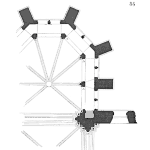
PMO with Rick Clonan
PMO is a process where you make efficient use of your PMs to understand the operating context of your assets in a better way. Once you have identified your critical assets, you can plan your PMs accordingly. These routine PMs should be designed in a way that they serve the purpose that you want from your assets. It is not just about reducing number of PMs, it is about finding failures and mitigating them. Our primary focus should be to make the PMs, more effective and then we can focus on the efficiency as well.
In this episode, we covered:
- What is PMO?
- Learn how you can define your critical assets so you can eliminate the bad factors!
- Why should there be a team dedicated to carry out PMO activities?
- And much more!










 Ask a question or send along a comment.
Please login to view and use the contact form.
Ask a question or send along a comment.
Please login to view and use the contact form.